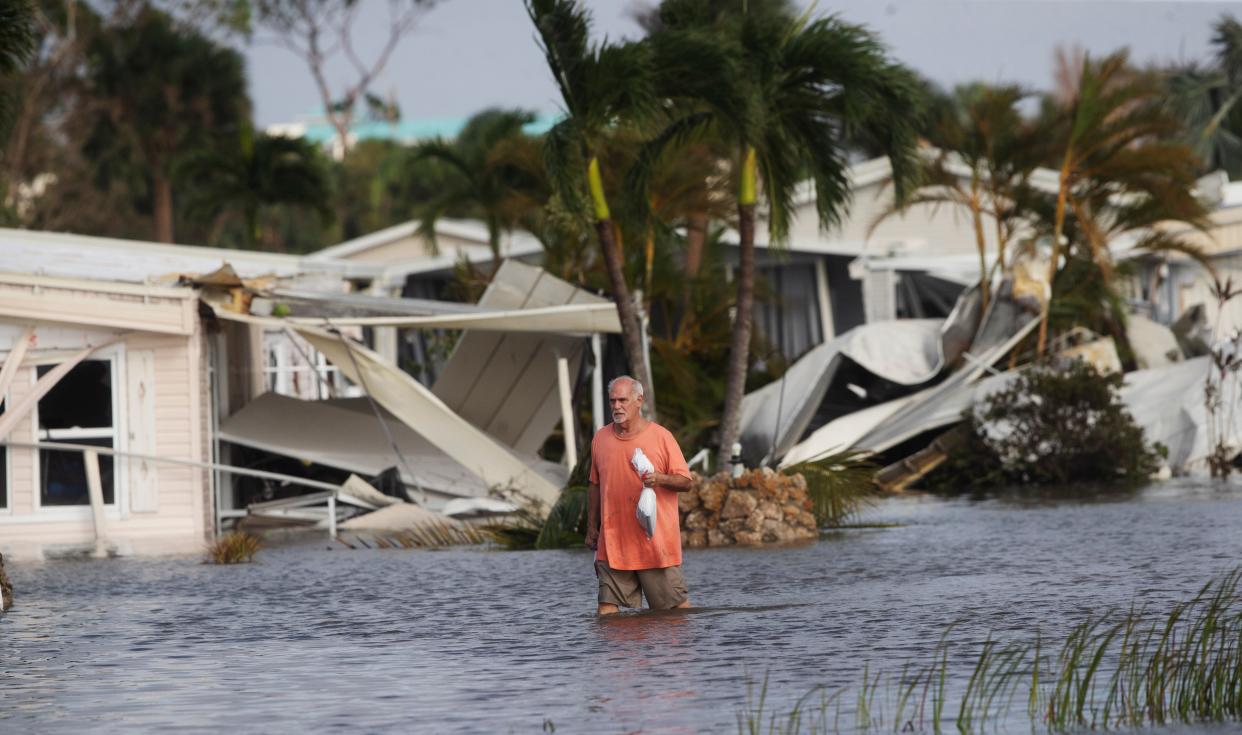How to safely use a generator during Hurricane Ian recovery

Hurricane Ian slammed Florida this week and caused severe damage to the area that could take months to repair.
This has caused some areas to see power outages and as crews scramble to fix the issues, there's no telling when power could be restored in some parts of Florida.
Hurricane Ian: Hurricane Ian leaves trail of misery with its long, slow trip through Southwest Florida
Hurricane Ian rescue: 'Here for our community': Sheriff's Office deploys mobile command center to help with search, rescue
This means generators could be in high-use as residents pick up the pieces.
But be careful using one.
Safety tips for using a generator as Florida recovers from Hurricane Ian
Here are some safety tips from Lee County Electric Cooperative
Don’t connect your generator directly to your home’s wiring at the breaker panel or meter or a regular household outlet. Connecting a portable electric generator directly to your household wiring can be deadly to you and others. A generator that is directly connected to your home’s wiring can ‘back feed’ onto the power lines connected to your home. You could also cause expensive damage to utility equipment and your generator.
The only safe way to connect a portable electric generator to your existing wiring is to have a licensed electrical contractor install a transfer switch. The transfer switch transfers power from the utility power lines to the power coming from your generator.
Connect individual appliances that have their outdoor-rated power cords directly to the receptacle outlet of the generator, or connect these cord-connected appliances to the generator with the appropriate outdoor-rated power cord having a sufficient wire gauge to handle the electrical load.
Don’t overload the generator. Do not operate more appliances and equipment than the output rating of the generator. Overloading your generator can seriously damage your valuable appliances and electronics. Prioritize your needs. A portable electric generator should be used only when necessary, and only to power essential equipment.
Never use a generator indoors or in an attached garage. Just like your automobile, a portable generator uses an internal combustion engine that emits deadly carbon monoxide. Be sure to place the generator where exhaust fumes will not enter the house, in a well-ventilated, dry area, away from air intakes to the home, and protected from direct exposure to rain, preferably under a canopy, open shed or carport.
Do not store fuel indoors or try to refuel a generator while it’s running. Gasoline (and other flammable liquids) should be stored outside of living areas in properly labeled, non-glass safety containers. They should not be stored in a garage if a fuel-burning appliance is in the garage. The vapor from gasoline can travel invisibly along the ground and be ignited by pilot lights or electric arcs caused by turning on the lights. Avoid spilling fuel on hot components. Always have a fully charged, approved fire extinguisher located near the generator.
Turn off all equipment powered by the generator before shutting down your generator.
This article originally appeared on Fort Myers News-Press: How to use a generator safely during Hurricane Ian aftermath

